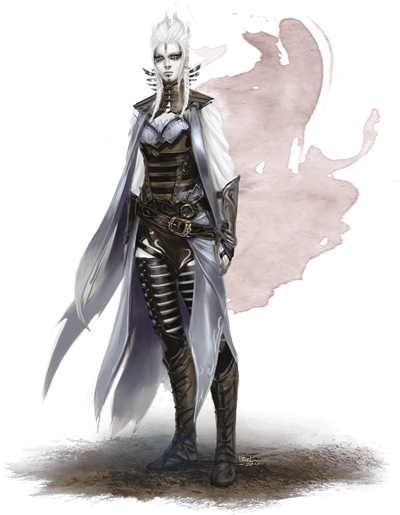 Class is back in session. This week, make a pact with a glamorous and enchanting being from another world, trading something precious in exchange for power. Your patron is no evil, power-hungry fiend, but rather an inscrutable Archfey who desires influence over the mortal world. Why do they seek this power, and for what reason do they want you as their mortal agent? Perhaps it’s vanity, perhaps it is power after all, or perhaps they are driven simply by the churlish desire to cause chaos, toying with mortals like the scurrying insects that they are.
Class is back in session. This week, make a pact with a glamorous and enchanting being from another world, trading something precious in exchange for power. Your patron is no evil, power-hungry fiend, but rather an inscrutable Archfey who desires influence over the mortal world. Why do they seek this power, and for what reason do they want you as their mortal agent? Perhaps it’s vanity, perhaps it is power after all, or perhaps they are driven simply by the churlish desire to cause chaos, toying with mortals like the scurrying insects that they are.
We’ve completed our first full rotation of the twelve classes, and exhausted all the content that the Basic Rules have to offer—as far as classes go, that is. This next wave of the Class 101 series will appraise every subclass within the Player’s Handbook and break down each subclass’s strengths, weaknesses, thematic elements, and everything else a player would want to know before playing that subclass. Because of this, you will need to own the Player’s Handbook (or purchase the subclass a la carte on the Marketplace) in order to make full use of this series.
Check out the other guides in the Class 101 series, like the broad overview of the warlock class in Warlock 101: A Beginner’s Guide to Eldritch Might, and Warlock 101: The Fiend. If you’re interested in playing other classes, check out the entire Class 101 series.
Story of the Archfey
“You’re late for your brother’s coronation, my prince.”
A tiny dragon, no larger than a housecat and covered with pearlescent scales, was perched atop a marble mannequin head. The head was draped with jeweled strands, and rested upon an opulent, three-mirrored vanity. Before the table stood a tall man, beautiful in all ways. His eyebrows were sleek and angled, his jaw was strong but refined, and his skin shone in the candlelight.
“I am not late, O Archfey,” said the prince, unperturbed by the voice of his otherworldly patron slithering from the mouth of his faithful pseudodragon familiar. He gazed at his own reflection and casually raised a straight razor to his face, gracefully shaving his beard into attractive stubble. “All those who are waiting at rapt attention are simply early. I will be their true king, after all. The rabble must acclimate themselves to serving my whims.”
The pseudodragon’s snout twitched, and its mouth curled into a sharp-toothed smile. “You wish to place them all under your spell, don’t you? You would make a fine addition to the Summer Court, my prince.”
The warlock-prince laughed. “In time, yes, they will all fall to my charms. But I am in no hurry. All that is needed today is to work our magic upon one person.”
Otherworldly Patron: The Archfey Features
Warlocks who make a pact with an Archfey are masters of charms and enchantments. Their patron grants them access to additional spells, as well as a number of innate magical abilities that help them ensnare the senses of their foes. Warlocks gain four subclass features at 1st, 6th, 10th, and 14th level. You can read all of the Archfey features in the Player’s Handbook. In summary, your subclass features allow you to:
- Gain access to an expanded list of warlock spells
- Beguile nearby creatures for a short time
- Vanish in a puff of mist to escape harm
- Counteract the charms of other creatures
- Imprison another being within their own mind, with only your duplicitous voice for company
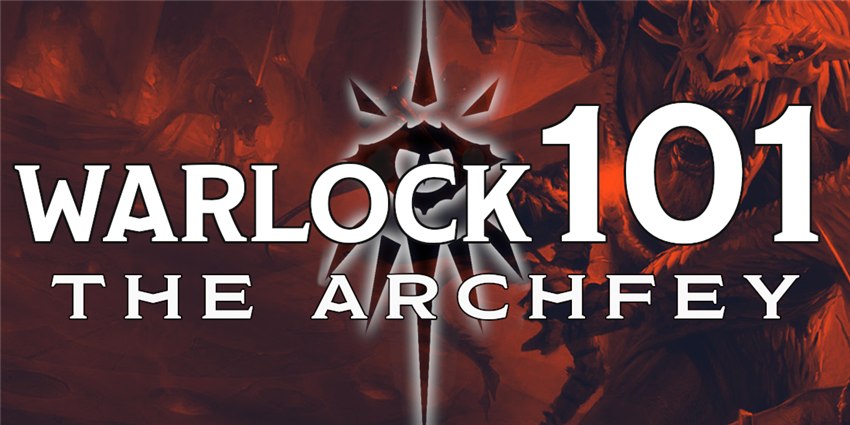
Benefits of the Archfey Patron
As guileful members of the Summer and Winter Courts of the Feywild, Archfey are all well-trained in the arts of deception and intrigue. Mortal beings who petition an Archfey for power seek a fragment of that power. Though every warlock has their own reasons for seeking power, those who forge a pact with an Archfey seek power through influence, not through destruction. Every single class feature granted by the Archfey patron allows you to help solve problems nonviolently, making this subclass perfect for an intrigue- or stealth-heavy game.
However, these abilities are powerful even outside of these specific campaign archetypes. Your nonviolent powers can be used as potent debuffs—particularly your Expanded Spells, Fey Presence, and Dark Delirium features—making you a particularly powerful support caster.
Drawbacks of the Archfey Patron
Warlocks are at their best when they have access to spells that efficiently use their limited spell slots. This means that spells with long durations are most valuable for warlocks, as well as spells that scale in power when cast with higher-level spell slots. While a warlock of the Fiend can unleash a devastating fireball at its maximum level, that incredible damage may not have a long-lasting effect on the state of the adventure. The new spells granted by the Archfey’s Expanded Spell list tend to have long durations, but few of them scale well when cast at higher levels. This prevents an Archfey warlock’s lower level spells (such as faerie fire and calm emotions) from being attractive options, as that precious spell slot could be better spent casting a spell of higher level, or at least casting a low-level spell that scales in power.
It should go without saying that while the Archfey patron is indeed powerful within its playstyle, players looking for a subclass geared towards all-out offense will find the Archfey patron lacking. The Fiend patron is much more powerful in terms of raw damage.
Suggested Build
 If you’re playing an Archfey patron warlock from 1st level, you should choose a race that gives you a bonus to your Charisma score. Half-elves gain an innate bonus to Charisma, and their Fey Ancestry is an easy way to tie your character’s story together. By the same token, dark elves share this fey connection and also gain a bonus to Dexterity and Charisma—plus, they have innate spells that can supplement your limited warlock spell slots. Dragonborn is an interesting racial choice for a warlock thanks to their innate bonus to Strength, especially if you decide to choose the Pact of the Blade later on (see “Pact Boon,” below).
If you’re playing an Archfey patron warlock from 1st level, you should choose a race that gives you a bonus to your Charisma score. Half-elves gain an innate bonus to Charisma, and their Fey Ancestry is an easy way to tie your character’s story together. By the same token, dark elves share this fey connection and also gain a bonus to Dexterity and Charisma—plus, they have innate spells that can supplement your limited warlock spell slots. Dragonborn is an interesting racial choice for a warlock thanks to their innate bonus to Strength, especially if you decide to choose the Pact of the Blade later on (see “Pact Boon,” below).
Once you’ve placed Charisma as your highest ability score, consider what else is important to you. Dexterity tends to be important for warlocks, to improve their Armor Class, but social abilities like Wisdom and Intelligence are useful for intrigue-heavy games. If you want to fight with sword and shield or a two-handed weapon, Strength might be the second most important ability for you, especially if you choose the Pact of the Blade at 3rd level (see "Pact Boon," below). Constitution will also help you take more blows in combat, and hang onto your precious concentration spells more easily (more on them later).
As usual, your character’s background is up to you. Anyone can become a warlock, though forging a pact with an otherworldly entity typically requires some sort of sacrifice. Consider what you could have sacrificed in your backstory in exchange for power—or if you have promised to be an investment for your Archfey patron, putting your eternal servitude on the line as collateral for some sort of worldly power that you have promised to grant them later. It makes sense for characters with the Noble background to seek out an Archfey, but picking an unusual background can help make your character stand out.
Selecting EQUIPMENT when creating your warlock is a good idea; a simple weapon of your choice, like a dagger or a quarterstaff, is useful. Your choice of arcane focus or spell component pouch is entire aesthetic, and a dungeoneer’s pack will almost always be more useful than a scholar’s pack. A few more daggers, some leather armor, and another simple weapon of your choice helps round out your arsenal. You can wear light armor, so hunting for a set of studded leather later in your adventuring career might be useful.
Spells
Warlocks don’t have the Spellcasting trait like most other spellcasters. Instead, they have Pact Magic. You start at 1st level knowing two cantrips, two 1st-level spells, and only a single spell slot. But that spell slot is recovered whenever you take a short rest; you could hypothetically cast spells all day long, as long as you have a little catnap in-between castings. Also of note is that your spell slots are all of the highest level you can cast (see the “Slot Level” column on your class features table). This isn’t useful now, but having your spells automatically scale to their highest possible power level is an incredible feeling.
Since you only have one spell slot for now, you need to make it count. You get a second slot at 2nd level, which is nice, but you don’t get your third spell slot until 11th level! Fortunately, you get the most powerful damaging cantrip in the game, eldritch blast, so you’re never useless, even when you’re out of spell slots.
You can learn any two 1st-level spells from the warlock spell list—which includes the 1st-level spells on your “Archfey Expanded Spells” list. You’ll want to choose these spells carefully; since the number of spells you know is severely limited, you want to have a versatile spell list. As you go on adventures and learn what dangers your character tends to face, you can personalize your spell loadout. Try to choose one labeled SUPPORT and one spell labeled either SOCIAL or DEFENSE. Note that this list only includes some spells from the Player's Handbook, so if you want to choose more unusual spells, or have other sources like Xanathar's Guide to Everything, you'll have to do a little self-directed research. This list is just here to get you started if this is your first time playing an Archfey patron warlock.
Especially at lower levels, a warlock will want to have spells that last for a long time. Since you have so few spell slots, maintaining concentration on spells with lasting effects is much more efficient than simply firing off a single explosive spell. If you want to deal damage, hex is one of the mightiest warlock spells in the game. However, if you want to lean into your SUPPORT or SOCIAL-focused role, spells like charm person can be incredibly powerful, especially since it can affect multiple people as it scales in power.
- Armor of Agathys (OFFENSE/DEFENSE)
- Charm person (SOCIAL)
- Faerie fire (SUPPORT)
- Hex (OFFENSE)
Pact Boon
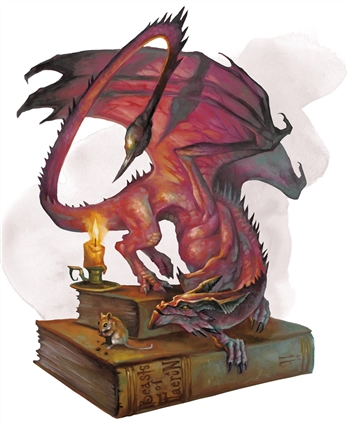 At 3rd level, you get to request a boon from your patron. This further defines the nature of your pact: do you wish to invoke the bloodstained Pact of the Blade? The shadowy and arcane Pact of the Tome? Or the manipulative Pact of the Chain? These pacts grant you a small bit of additional power immediately, and access to certain Eldritch Invocations later on.
At 3rd level, you get to request a boon from your patron. This further defines the nature of your pact: do you wish to invoke the bloodstained Pact of the Blade? The shadowy and arcane Pact of the Tome? Or the manipulative Pact of the Chain? These pacts grant you a small bit of additional power immediately, and access to certain Eldritch Invocations later on.
Most who follow the Archfey prefer the subtle Pact of the Chain, which grants them a familiar to do their bidding. However, the Pact of the Tome’s increased magical flexibility is nothing to sneeze at. As for the Pact of the Blade, even this bloody path has use in intrigue-heavy campaigns. After all, there is no poisoned dagger better hidden than one you can conjure from thin air or dispel at will.
Eldritch Invocations
Once you reach 2nd level, you gain the ability to select two Eldritch Invocations. You can trade out an old invocation for a new one whenever you gain a level in this class, and you gain brand-new invocations every two or three levels (again, see the warlock class features table). Some invocations have prerequisites that you must meet in order to select them, so learning how to trade out old invocations for this fresh and exciting ones is an important skill to master. Here are some invocations that will probably be useful to you as a warlock of the Archfey:
Beguiling Influence. If your campaign has a lot of intrigue—or even if just the current arc of your campaign is roleplay-heavy—then this invocation will make you a silver-tongued charmer.
Bewitching Whispers. The ability to all but puppeteer a creature for a minute is perfectly in line with what Archfey warlocks seek to do.
Book of Ancient Secrets. This invocation is only useful to Pact of the Tome warlocks (a choice you can make at 3rd level), but it’s incredibly useful. Since you don’t have the Ritual Casting feature that many other spellcasting classes have, this is the only way to cast ritual spells as a warlock. It’s incredibly powerful.
Gaze of Two Minds. In a campaign where secrets reign supreme, the ability to see through the eyes of a willing double agent is incredibly powerful. The same applies to the One with Shadows invocation, which lets you become invisible while motionless in areas of shadow.
Mask of Many Faces. Like Beguiling Influence, this invocation is great for campaigns that lay the intrigue on hot and heavy. Situational, but powerful within its niche.
Voice of the Chain Master. The Pact of the Chain can be incredibly powerful, if you have the tactical inclination to micromanage both your character and your familiar. This invocation just makes that power greater.
Feats
 At 4th level, you get to gain either an Ability Score Increase or a feat. Choosing an Ability Score Increase lets you increase one ability score by +2 (such as increasing your Charisma score from 16 to 18) or increase two ability scores by +1 (like increasing your Charisma from 15 to 16 and your Dexterity score from 13 to 14). Increasing your ability scores makes you better at a wide variety of things; for instance, increasing your Charisma score makes it easier to hit with your spell attacks and also make it harder for enemies to resist your spells that require saving throws.
At 4th level, you get to gain either an Ability Score Increase or a feat. Choosing an Ability Score Increase lets you increase one ability score by +2 (such as increasing your Charisma score from 16 to 18) or increase two ability scores by +1 (like increasing your Charisma from 15 to 16 and your Dexterity score from 13 to 14). Increasing your ability scores makes you better at a wide variety of things; for instance, increasing your Charisma score makes it easier to hit with your spell attacks and also make it harder for enemies to resist your spells that require saving throws.
Feats, on the other hand, give you a special ability that could be more helpful in a specific circumstance, as opposed to the broad improvement that an Ability Score Increase could give you. Charisma is your most important ability score, since it determines the power of your spells. Once you’ve increased your Charisma score to 20 (its maximum value), or even just to 18 (a pretty good value), you may want to choose a feat. You can choose any feat you want to support your character concept, but there are some feats that may be more useful to your character than others.
Actor. This feat shines in social situations, and gives you a +1 bump to your Charisma score. A decent pick if you have an odd Charisma score and want a little something to make you even more guileful.
Inspiring Leader. Your already-high Charisma makes you an excellent candidate to be the social face of your party. As your character becomes more confident in their own abilities, having them become a leader that inspires your allies to great deeds is an excellent story beat, with some good mechanics attached.
Skulker. If stealth is a key focus of your campaign, pairing this feat with the One with Shadows invocation makes you an unparalleled sneak.
If you want more advice for building a warlock, check out Warlock 101. Have you ever played an Archfey pact warlock? What advice would you give to players that want to play this subclass?
Create A Brand-New Adventurer Acquire New Powers and Adventures Browse All Your D&D Content
 James Haeck is the lead writer for D&D Beyond, the co-author of Waterdeep: Dragon Heist, Baldur's Gate: Descent into Avernus, and the Critical Role Explorer's Guide to Wildemount, a member of the Guild Adepts, and a freelance writer for Wizards of the Coast, the D&D Adventurers League, and other RPG companies. He lives in Seattle, Washington with his fiancée Hannah and their animal companions Mei and Marzipan. You can find him wasting time on Twitter at @jamesjhaeck.
James Haeck is the lead writer for D&D Beyond, the co-author of Waterdeep: Dragon Heist, Baldur's Gate: Descent into Avernus, and the Critical Role Explorer's Guide to Wildemount, a member of the Guild Adepts, and a freelance writer for Wizards of the Coast, the D&D Adventurers League, and other RPG companies. He lives in Seattle, Washington with his fiancée Hannah and their animal companions Mei and Marzipan. You can find him wasting time on Twitter at @jamesjhaeck.








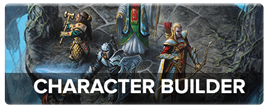
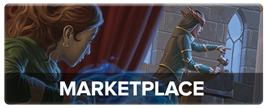
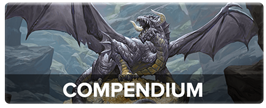
-
View User Profile
-
Send Message
Posted Jan 19, 2020I played a Pact of the Fey Warlock. He concentrated on improving his Eldritch Blast and staying out of missile range of his opponents. Pact of the Chain kept him alert to what was going on around him and staying out of harms way.
-
View User Profile
-
Send Message
Posted Jan 19, 2020The question came up in my group what class Maleficent would be. After some digging through our books, we decided on archfey Warlock pact of the chain. This article helped me explore that a little deeper as we try building what her character would look like. Good timing!
-
View User Profile
-
Send Message
Posted Jan 19, 2020I had not played D&D for any extended period for a number of years, until recently. My first character was a Half Elven Feylock, Pact of the tome. His grandfather is Eladrin, who did *not* approve of his daughter's choice of a human husband. Here's what I love about it: the inscrutable nature of the Fey, as noted in the book, allows my character to not know the nature of a lot of things, including his patron. He thinks it's Sehanine, who appears in his dreams and writes to him through his Grimoire. But maybe it's an Archfey his grandfather knows? I've intentionally let the DM know more than I do, and every time I do something with the Feywild, I have a chance to wind up there for an extended time period, even if in game time, is the same as the rules write. For example, after a Misty step, he's twice been hours, and once four days, in the Feywild, even though he returned the next combat round on the prime material plane.
So far, the patron desires every magical creature, item, or dungeon setting to be recorded in the book. So, by nature, he's become a seeker of knowledge. He's also become the lone consistent caster in the party. This means he uses things like Eldritch sight almost all the time. Even though it could be a ritual now, it's within RP flavor to keep it as is, though he did move eyes of the Runekeeper to Ritual cast.
Ultimately, unlike the obvious Fiend or perhaps the completely unknowable GOO, the Fey carry a completely whimsical and random nature.The point I'm making is that you can do a lot with Feylocks that keep things a mystery and allow for a lot of in game flavor. Playing one has reinvigorated my love for the game that I first picked up almost 40 years ago. Kudos on the article, James, and for the contribution to D&D.
-
View User Profile
-
Send Message
Posted Jan 20, 2020Same, I read this for 2 reasons, 1. for DM and just knowing the possible abilities of my players so I can make encounters a little more challenging. I also like reading them to just give me ideas for future characters!
Like Mhopman1990, thanks James
-
View User Profile
-
Send Message
Posted Jan 21, 2020awesome
-
View User Profile
-
Send Message
Posted Jan 22, 2020True, True
-
View User Profile
-
Send Message
Posted Jan 24, 2020Just start a human male who makes a pact with the god of visions and stupor. Pick Pact of the Tome. It's a book, but in contains weed and mushrooms and what else instead of ink, and You can use the pages to roll the joints instead and it has pipes inside it instead of pens or quils. you communicate with your patron via trips. Pick spells that haze and daze your opponents and/or friends, yourself. Have all your provisions as a combination of weird and gross.
Congratulations, you made Snoop Dogg in DnD.
-
View User Profile
-
Send Message
Posted Jan 25, 2020I am currently playing a halfling pact of the chain feylock. Patron is Baba Yaga, mother of witches, or ”Granny.” Most invocations and spells involve teleporting and protecting himself from harm “Granny, save me!” While scouting with his familiar. He doesn’t understand why other casters have to study books, he just Magics things.
using repelling blast and dropping a demon summon before bamfing out of range like night crawler never gets old.
-
View User Profile
-
Send Message
Posted Jan 27, 2020Had something similar happen Saturday night! Us vs. 3 fire Giants. Pushed one 10' away, who's brother saw it happen, turned to run after me, hit me (with armor of Agathys) and as I Misty escaped away from the second hit, he was left exposed to the paladin and one of two barbarians, having taken 20 points of damage. Glorious.
-
View User Profile
-
Send Message
Posted Jan 28, 2020The dm was really mad when I thunderstepped to the Indiana Jones style pedestal over the chamber of death to avoid the silly skill challenges, then misty stepped when I took damage from the poison trap out of his death chamber
-
View User Profile
-
Send Message
Posted Jan 29, 2020Nice!! Misty step / escape are the best. I used fly for the same purpose as your thunderstep and to do the same thing. Also very useful in large room / open terrain fighting. The Feylocks are great at motion, misdirection and surprise. It's a very underappreciated part of combat, and because the randomness throws off both tactics and strategy from the enemy, a lot of DM's best laid plans go to waste. We may not get a ton of "kills," but we get a lot of board control based "assists."
-
View User Profile
-
Send Message
Posted Jan 29, 2020It's pretty hard to think of a situation where Gaze of Two Minds accomplishes something you couldn't accomplish just as easily by using Find Familiar or having the target, you know, talk to you.
-
View User Profile
-
Send Message
Posted Feb 4, 2020We've got a College of Lore bard who's looking to multi-class into warlock. This looks ideal alongside his current build.
How do you submit articles for here?
-
View User Profile
-
Send Message
Posted Feb 4, 2020Unless you're a DnD beyond curator thingy, then you have to make a forum chat.
-
View User Profile
-
Send Message
Posted Feb 4, 2020Thank you
-
View User Profile
-
Send Message
Posted Feb 4, 2020So, different direction. Feats.
I took Fey ancestry. +1 to casting stat and free Misty step? Yes, please.
So, I'm now at Charisma 18. No brainer to get charisma 20, right? Well, yes for most people. But not in my case. I'm already the most charismatic in the party. But A lot of my rolls have not been against charisma, but against intelligence (16) and wisdom (14) because of my primary role as arcane researcher and caster. The bard is a bit more valor oriented. In addition, most of my combat skills are board control and misdirection, not Direct damage. In addition, we've had lots of ranged combat - moreso than most campaigns I've been in. So I think I'm going to take Spell sniper. 240 foot Eldritch blast with repelling blast, or any other to hit roll spell? While I'm invisible or flying? All day.
-
View User Profile
-
Send Message
Posted Feb 18, 2020Great post, as always!
I felt challenged by my DM who always made jokes about Warlocks “well let me guess you’re going to Eldritch blast?” (A common response to a PC when he was running a great old one.)
He genuinely felt that they were terrible.... and I can understand why, the utility that a wizard brings, the skills, buffs & consistent spell casting a bard offers ot the madness that is meta magic sorcs can have the Warlock left wanting... but they can be so much more.
In a mini adventure I decided to roll up a Warlock that didn’t rely on Eldritch blast. In fact I did one better and didn’t even take the cantrip. In combat when I wasn’t using faerie fire, sleep, Bane, slow. My familiar was helping others I was sitting in the back lines casting silent images(at will) and minor illusions to completely disorientate foes. If I really wanted to do damage I’d use the longbow or shadowblade for some measly damage. Though I believe the amount of times I completely dodged encounters with smart uses of illusions, speechcraft or charms earned my fair share of XP for the party.
In combat My DM was amazed at how many times a well placed “wall” had my allies obscured to range attacks, or the illusion of a thick bog to enclose on the battle obscuring everyone within it although most baddies didn’t have a Voice of the pact master invisible sprite flying around telling his allies what was going on around them, the occasional 15 ft hollowed out cube of terror could have had a cluster of enemies controlled, any that tried to press up to investigate got a quick fear from the Eladrin hiding behind the illusion to keep their comrades from trying the same. Not to mention charming foes to keep them distracted or have them flee from a fight completely, my favourite was transforming into one of their fallen leaders and among the fray (with actor) calling a full blown retreat.
I definitely found I was doing close to no damage unless a longbow sneak attack seemed viable. But the buffs for my allies made up for it. But I didn’t enjoy this build for its functionality or DPS I LOVED it because I wasn’t thinking of who to eldritch blast and rolling dice every turn and passing... Every round was a chance for me to try something crazy and see what would happen, and to me that chaos speaks right at home to this subclass even if it wasn’t always effective.
Although my DM still thinks Warlocks belong in the trash, he still refers to Ren as one of the most creative characters he’s ever seen played. (That’s with pre 3.5 experience under his belt)
-
View User Profile
-
Send Message
Posted Feb 18, 2020Love it!! Did you make it on dnd beyond? If so, can I see it, as I want to take it and maybe make some changes for my campaign
-
View User Profile
-
Send Message
Posted Feb 20, 2020I deleted it when we finished up the adventure but this is Pretty much the same I believe.
We also got a free feat, since you might notice something strange going on.
-
View User Profile
-
Send Message
Posted Feb 20, 2020Where?